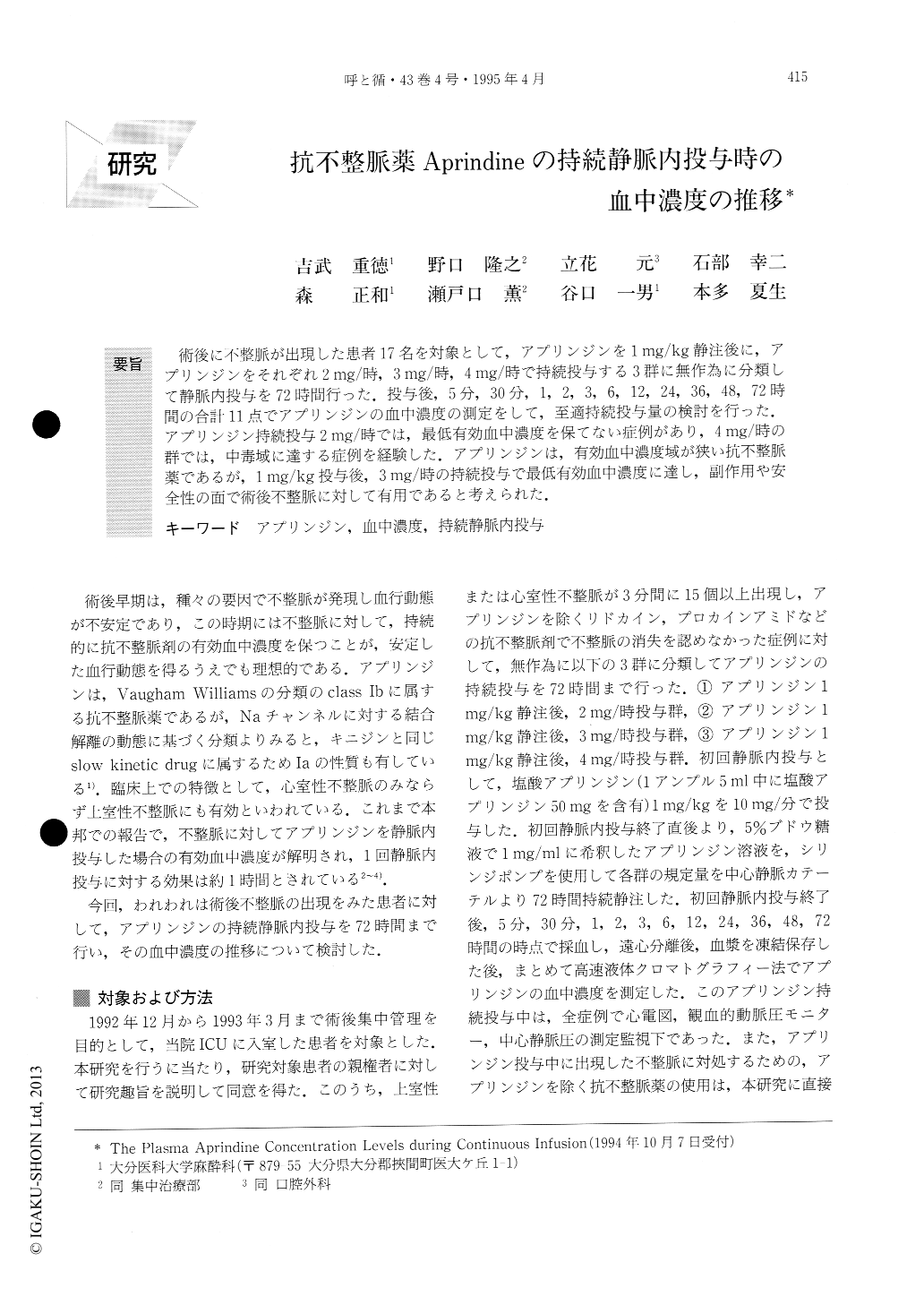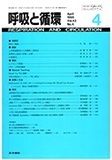Japanese
English
- 有料閲覧
- Abstract 文献概要
- 1ページ目 Look Inside
術後に不整脈が出現した患者17名を対象として,アプリンジンを1mg/kg静注後に,アプリンジンをそれぞれ2mg/時,3mg/時,4mg/時で持続投与する3群に無作為に分類して静脈内投与を72時間行った.投与後,5分,30分,1,2,3,6,12,24,36,48,72時間の合計11点でアプリンジンの血中濃度の測定をして,至適持続投与量の検討を行った.アプリンジン持続投与2mg/時では,最低有効血中濃度を保てない症例があり,4mg/時の群では,中毒域に達する症例を経験した.アプリンジンは,有効血中濃度域が狭い抗不整脈薬であるが,1mg/kg投与後,3mg/時の持続投与で最低有効血中濃度に達し,副作用や安全性の面で術後不整脈に対して有用であると考えられた.
Aprindine is a very effective antiarrhythmic class Ib agent with a narrow therapeutic window. We examined the optimal infusion ratio of aprindine for postoperative patients. 17 patients were randomly divided into the following three infusion groups. Aprin-dine was given at a dose of 1mg/kg over 10 minutes followed by an infusion of 2mg/hour, 3mg/hour or 4mg/ hour over a period of 72hours. Plasma aprindine levels were measured at 5min., 30min., 1,2,3,6,12,24.36,48 and 72hours. In the 2mg/hour group, 2 patients showed levels below 0.25jig/ml, which was considered the minimum effective therapeutic concentration for Japanese. In the 4mg/hour group, some showed exces-sive toxic levels. In the 3mg/hour group (51.5±7.1μg/ kg/hour). all plasma aprindine levels were within good therapeutic range. The results suggest that an aprin-dine infusion rate of 3mg/hour is effective and safe for postoperative patients although further investigations are needed concerning longer infusion time, and con-cerning patients with liver dysfunction.

Copyright © 1995, Igaku-Shoin Ltd. All rights reserved.


